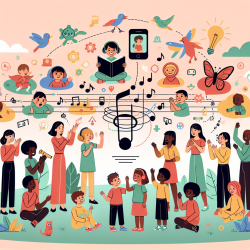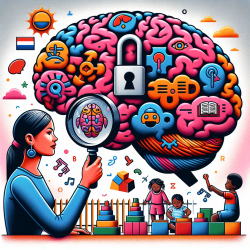In the evolving field of special education, particularly in the realm of supporting autistic children, the strides made in understanding and enhancing language intervention have been both significant and inspiring. Drawing from the insights of Amy M. Wetherby's research in "Language Intervention for Autistic Children: A Look at Where We Have Come in the Past 25 Years," this blog aims to empower practitioners with knowledge and strategies to refine their therapeutic approaches, ensuring that we continue to build on the progress made over the last few decades.
Autism, characterized by unique communication and interaction patterns, presents distinct challenges and opportunities in language development. The evolution of diagnostic criteria and a deeper understanding of autism's neurological underpinnings have shifted our approach from a predominantly psychogenic perspective to one that acknowledges the neurodevelopmental nature of autism. This shift underscores the importance of specialized language intervention programs tailored to the needs of autistic children.
Effective language intervention for autistic children requires a multifaceted approach, incorporating insights from recent advancements in our understanding of autism and its impact on language and communication. Here are key strategies and considerations for practitioners:
- Emphasize Social Communication: Understanding that language development in autistic children is intrinsically linked to their social interaction capabilities is crucial. Interventions should aim to enhance social communication skills, fostering meaningful engagement with others.
- Functional Communication Training: This approach focuses on teaching children how to communicate their needs and desires effectively, reducing reliance on problematic behaviors. By understanding the function behind certain behaviors, therapists can offer alternative, more appropriate means of communication.
- Incorporate Parents and Caregivers: Engaging parents and caregivers in the intervention process is vital. Training them to recognize and respond to their child's communicative attempts enriches the child's learning environment and ensures consistency across settings.
- Utilize Technology and Alternative Communication Methods: Advances in technology have introduced new avenues for enhancing communication. From speech-generating devices to tablet-based apps, these tools can be integrated into therapy to support language development.
- Individualized Intervention Plans: Each child's strengths, challenges, and interests should guide the development of personalized intervention strategies. This tailored approach ensures that therapy is relevant and engaging, promoting active participation.
Moreover, the role of the speech-language pathologist extends beyond direct therapy. Collaborating with educators, therapists, and families to create supportive and inclusive environments is essential for reinforcing language skills and social communication.
As we look to the future, the continued integration of research findings into practice will undoubtedly enhance our ability to support autistic children in their language development journey. It's a collaborative effort that demands creativity, patience, and a deep commitment to understanding the unique world of each child we work with.
For those interested in delving deeper into the research that has shaped our current understanding and approach to language intervention in autistic children, I highly recommend reading the original research paper by Amy M. Wetherby. It provides valuable insights and underscores the importance of evidence-based practices in the field of speech-language pathology. To read the original research paper, please follow this link: Language Intervention for Autistic Children: A Look at Where We Have Come in the Past 25 Years.










